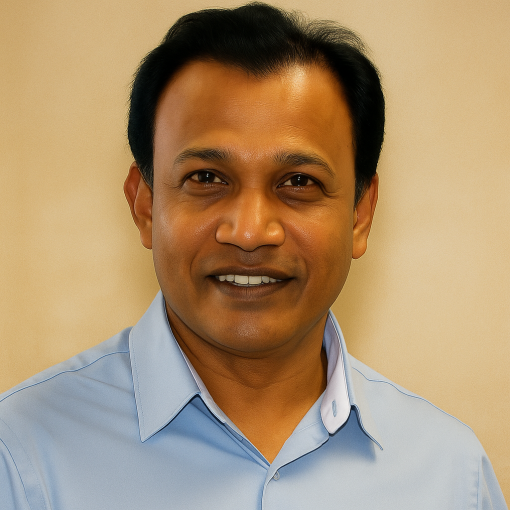by Michael Mina, MD, PhD, Chief Medical Advisor of Oncodea | July 22, 2025
What if you could know you had cancer before symptoms ever appeared, when it was most treatable, least costly, and least disruptive to your life? This is the promise of early cancer detection, one of the most powerful tools we have to save lives, reduce suffering, and cut the staggering costs of cancer care. Unfortunately, society still treats cancer as if we can only respond once it’s found too late.
It doesn’t have to be this way – and in the future it won’t be. By bringing fast, accessible diagnostics to everyone, we can shift the curve of cancer care from reactive medicine scrambling to catch up, to preventive health and proactive care. This shift will redefine public health.
Early Detection Saves Lives and Money
When cancer is found early, survival rates soar. Stage I breast cancer has a five-year survival rate of over 99%. Colon polyps caught before becoming malignant can be removed with a simple procedure, effectively erasing the cancer they were poised to become. Across nearly every cancer type, early detection drives better outcomes, less invasive treatment, and offers potentially decades of extended healthy life.
Quick Facts
- Stage I breast cancer has a 5-year survival rate of over 99%.
- Treating advanced cancer can be nearly ten times more expensive than treating it early. (Source: American Cancer Society)
- The U.S. spends billions each year battling late-stage cancers that could be reduced with early screening.
The opposite is also true. Late-stage cancer is complex, devastating, and expensive, driving a cycle of “financial toxicity” to individuals and society. According to researchers at the American Cancer Society, the costs of treating advanced cancer can be nearly ten times higher than treating it early. The US spends billions of dollars each year battling late-stage disease that could have been dramatically reduced through routine, accessible, and affordable screening.
When we scale early detection, particularly through major public health programs and guidelines, we lower cancer burden, extend healthy life expectancy, and free up resources for other critical health priorities. Public health, at its core, is about population-based strategies that improve life for everyone. Accessible screening diagnostics are one of the most impactful strategies we have.
Diagnostics as a Public Health Tool
Historically, diagnostics have been reactive – largely tests that are ordered only after symptoms appear. Today’s technologies however allow us to make them frontline defenders against disease. We’ve seen how preventive tools like vaccines can transform public health, from eradicating infections to reducing cancers caused by viruses such as HPV, which has dramatically lowered cervical cancer rates. While most cancers don’t have such a direct preventive solution (though I believe that the growing evidence of viral links to cancer will uncover more connections over time – potentially addressable through vaccination), cancer screening programs can be just as powerful in saving lives by catching cancers when they are easiest to treat.
The key is accessibility. Screening is still too often tied to hospitals or specialist referrals. These barriers lead to millions of missed tests, especially in underserved communities
“A test that is accurate but inaccessible does not save lives.”
The next era of cancer screening
The future of cancer diagnostics is already unfolding. Liquid biopsies, blood tests that detect trace fragments of tumor DNA or tests that use novel spectral technologies and AI to uncover the molecular fingerprints of early stage cancers are making it possible to find cancers that were once invisible until advanced stages. AI-enhanced imaging is improving the accuracy of mammograms, colonoscopies, and CT scans, reducing false positives and missed cancers. Soon, we will see point-of-care and at-home cancer screening tools that can be used as easily as checking your blood sugar or blood pressure.
Just take a moment to imagine it – a world where screening for cancer is as simple and routine as checking your cholesterol or perhaps as simple as brushing your teeth or looking in a mirror. These technologies, though in their infancy, are coming. At-home tests for colon cancer like Cologuard are already proving that convenience dramatically increases participation. As these tools advance, we have an unprecedented opportunity to bring cancer detection out of the clinic and into daily life.
Public Health Dividends
The benefits of early detection are enormous. For patients, early cancers require less invasive treatment, cause less physical and emotional trauma, and rarely shorten life expectancy. For clinicians, early detection simplifies care pathways. For health systems, the economic savings are staggering, freeing resources for prevention and innovation. For society, early detection means fewer lives cut short, stronger families, and a healthcare system focused on preserving life rather than managing crisis.
“When diagnostics become a population health strategy, the ripple effects are profound – healthier communities, lower financial burdens, and a more sustainable health system.”
Access is Key
Cost and access must be central to innovation. Advanced diagnostics too often are available to too few. Meanwhile, public health impact comes from scale. A less sensitivity test that can reach 100 million people a year is far more likely to be an impactful public health tool than a highly sensitivity test that can only reach 100,000 people a year. Making cancer screening affordable, widely available, and easy to use is how we shift from treating late-stage disease to preventing it altogether.
Reimagining the Future
The future of cancer care will not be defined by drugs alone. It will be defined by how early and how broadly we can detect disease. Diagnostics should no longer be afterthoughts but the foundation of public health.
Tomorrow’s cancer screening will be integrated into daily life, eventually as easy as brushing our teeth or even looking in the mirror. Early detection is perhaps the single most powerful lever we have to transform cancer outcomes. It saves lives, reduces suffering, and cuts costs. To unlock it though, we must treat diagnostics as critical public health infrastructure. The tools must be built for populations, not just individuals.
The goal is straightforward: catch cancer early, treat it early, and save lives and resources. That’s a future worth building.
“Early detection is perhaps the single most powerful lever we have to transform cancer outcomes.”



